#john simpson
Text

Richard Burton Interview with BBC reporter John Simpson (1977) - shortly after his 1976 divorce from Elizabeth Taylor.
I was the BBC’s radio correspondent in Johannesburg at the time when the African scenes in The Wild Geese were filmed… . The prospect of meeting Roger Moore, Richard Burton, Richard Harris and Hardy Kruger was, of course, an attractive one, though I probably didn’t mention that side of it. It would scarcely have sounded sophisticated.
“If you remember, I asked for an interview with Richard Burton.” … I wasn’t expecting anything. If Richard Burton was too grand to have lunch with the others, he would certainly be too grand to be interviewed by me. The PR man came back looking apologetic. I was ready with a sharp reply, assuming I would be given a crisp turn-down.
“He says if you don’t mind the mess in his caravan… . . [H]e’s just going through it a bit. That’s all.”
He certainly was. Richard Burton’s ravaged, pockmarked face looked even harsher in reality than it did with all the care of the make-up artists. And despite the fierce sun outside he looked pale and unhealthy.
But nothing could affect the voice.
“Come in, come in, my dear boy,” he said, gripping my hand and pulling me up the steps… . The warmth of his tone outdid the afternoon heat.
“Really sorry not to be down there with the others for lunch,” said Burton. “The fact is, you see, I’m on the wagon at the moment, and it doesn’t feel all that good, I have to confess… . Wish I’d been teetotal, like my old schoolmaster told me. But the stage, you know. And the company I’ve kept.”
He gave a huge laugh, which seemed to make the entire caravan shake. It was a big one, with room enough for a sizeable (unmade) bed and a table covered with books, make-up bottles and photographs in silver frames. The biggest photograph was of Elizabeth Taylor. I had wondered how to broach the subject, after their divorce. But with Burton, whether it was because of the influence of the bundu or his free, open nature, there was no trouble at all.
He saw the direction of my eyes.
“Ah, Elizabeth. Isn’t she the most beautiful animal you’ve ever set eyes on?”
… . I nodded, and felt emboldened.
“So, you don’t feel bitter towards her?”
“Bitter?” The caravan shook again.
“Look, if she’d have me back I’d leave this sh—y film and this ghastly heat right now, and charter a plan to go wherever she was. Actually I know where she is. She’s in Malibu. I kind of keep in touch, you know.”
“So why… . .?”
“It’s the old thing: can’t live with her, can’t live without her. But I adore Elizabeth, and I always will.”
There was a catch in his voice, and he looked out of the window at the baobab trees.
“I don’t drink now, you know. I’m not pretending it’s not painful, but I’ve given it up for good. It was what Elizabeth hated most in me, I think, even though she’s pretty partial to it herself. It was like pouring petrol over our marriage. And now I don’t do it anymore. I hate it, in fact.”
… . It seemed to me that a tear was glittering in his eye… .
“What is it about her that you love so much?”
“Ahhh,” he said expansively, waving his arms at the baobabs, “where does one start? ‘Age cannot wither her… .’ She’s a magnificent actress, you know, if only they will let her be.”
“She’s lazy, they say, and they also say she’s not very bright, though that happens to be an outright, damned lie. It’s just that her brightness is a natural brightness, not necessarily a college brightness. She may not know all about Shakespeare or Marlowe or Albee, but she understands the emotional truth, and that is what she projects.”
… “Director wants to know if you’re all right, Mr. Burton.” The voice was muffled by the door.
“Tell the director to go and f—- himself. I’m reminiscing here about the divine Elizabeth, and mustn’t be disturbed.”
“You were telling me about her understanding of the emotional truth of a part.”
“Was I?” … “But you see, what I should have said was that she was a lass unparalleled. A woman of the most charming but also the most natural kind. She could take care of a man, you know.”
He glanced at me.
“No, I don’t mean that. What I mean is that she could be so normal, so natural, so caring.
Listen. Once I took my brother and my business manager to Twickenham for the Wales-England match. Wales won; they always did in those days. And of course we had too much to drink, even my little runt of a manager. Much too much. And we came back on the Tube, and fetched up for some reason at Tottenham Court Road station. I must have said I knew a bar near there. It was late, you see, about midnight.
There was a gang of about a dozen skinheads at the top, all tattooed with England flags on their chests and faces and arms; a rather fearsome sight.
Well, it was too late to turn back, so we decided to take them head on. When I say we, I mean my brother and me. The last I saw of my manager, he was shouting, ‘You can’t hit me, I’ve got a briefcase.’ They gave us both a pretty good going-over. I think they were worse to me, though I don’t think they’d seen me on the screen. Maybe I was just bigger and uglier than my brother.
And then they left us lying there at the entrance to the Tube. My brother said he thought he could manage to get home by himself, and he hailed a taxi for me. He had to do quite a lot of persuading, because my entire head was a mass of blood. But at least I didn’t seem to have any bones broken. I told the driver to take me to the Dorchester, and gave him a tenner. Which was pretty good money in those days.
They wouldn’t let me in at the Dorchester, of course, till I told them who I was and demanded to see the manager. Then they were niceness itself, and two of them helped me to the door of our suite, though I told them to leave before I banged on the door for Elizabeth.
But, you see, she was magnificent. Utterly magnificent. She didn’t have a fit of the vapours, she didn’t get excited, she didn’t even tick me off for being drunk and getting beaten up.
‘Oh, you poor thing,’ was all she said, and she rang down for bowls of water and towels and bandages and God knows what. And when they sent up some kind of quack to look after me, she shooed him away.
She sponged the blood off my face, and found that my left eye was halfway out of its socket, so she carefully put it back in. Would you ever imagine that someone like her would be able to do any of that? But she was tough, you see, and brave too. And she tucked me up I in bed with the bandages over my head, and at nine o’clock the next morning, when I was starting to feel a bit better, she ordered up a magnum of Bollinger to cheer me up. And then she sat on the side of the bed and toasted me and Wales’s victory.”
He paused, and looked away from me and the microphone.
“Magnificent woman, in every way. Magnificent. If I’m honest, my life is a little empty without her.”
He thought for a moment.
“No, if I’m honest, my life is horribly empty without her.”
I (author) said goodbye not long afterwards, and shut the door of the caravan on him. He waved me out in the most courtly fashion, but I think he was probably glad to be left alone with Elizabeth Taylor’s picture.
#Elizabeth Taylor#Richard Burton#Love#Black and White#Interview#John Simpson#70's#1960's#Old Hollywood#Vintage#Taylor Swift#True Love#Smoking#Heartbreak#Breakup#Burton and Taylor#Lover#Quote#Love Quote#Wales#England#Actors#Photography
9 notes
·
View notes
Text

Prince Auguste de Beauharnais, Duke of Leuchtenberg. By John Simpson.
4 notes
·
View notes
Text
From News Gatherer To News Maker - A Mad World, My Masters - John Simpson
From News Gatherer To News Maker – A Mad World, My Masters – John Simpson
In A Mad World, My Masters John Simpson presents a set of observations and anecdotes drawn from a near lifetime of reporting for television news. Over a career spanning decades, John Simpson has worked on many of the major stories of recent history. He has covered conflicts, such as the Gulf War and the Balkans, general interest stories, such as Hong Kong’s transfer and the new millennium, and…

View On WordPress
2 notes
·
View notes
Photo
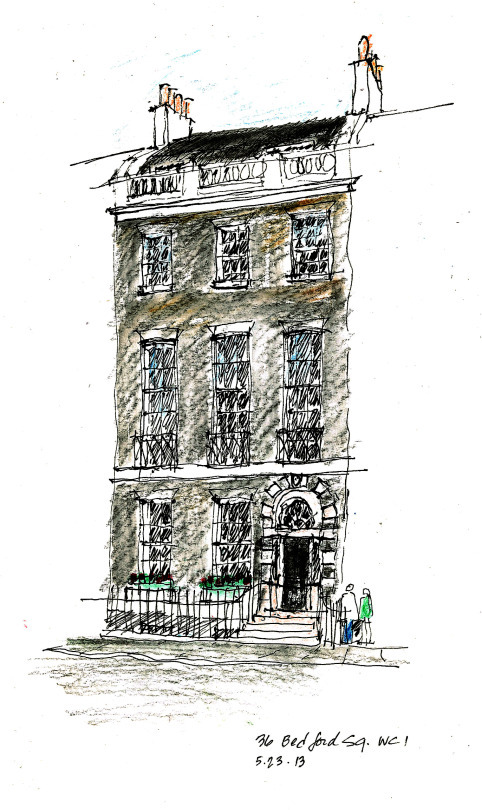
Thomas Leverton (c.1743—1824). Bedford Square, 1770s.
Building to Last
To make a building last one would imagine that one would build the most stable structural form in the most durable materials. The ultimate conclusion following this principle would lead one to the Egyptian pyramid. Structurally the pyramid is the most stable form possible. Furthermore, the Egyptians pyramids were built of solid stone without any doors or windows and covered in polished granite, the hardest and most durable natural material available. They lasted five or six thousand years and they are still standing today. Their durability makes them the closest man has got to building a time machine.
The pyramids, however, are a very poor model to adopt for creating useful buildings for people to live and work in. Consequently, the pyramids have had their granite covering stripped off and do not survive in pristine condition. This contrasts greatly with the Pantheon in Rome, which has been in continuous use since it was rebuilt by Hadrian in the second century AD and has consequently survived relatively intact. Buildings which are useful last. There needs to be an incentive for people not only to maintain a building but to ensure that it is not demolished and recycled.
A totally different method was traditionally used by the Japanese to create Shinto temples that would endure. Timber is the most practical building material in Japan because it is light and comparatively flexible, which is important in a country prone to earthquakes. But timber is not an intrinsically durable material. Therefore the Japanese dedicated a community of monks to devote their lives to rebuilding the temples every twenty-five years using the same forms and techniques of construction.
Vital to the survival of buildings is their usefulness and changeability. Neither the windowless pyramids nor the selfless dedication of the Japanese monks is a workable everyday model. We need to strike a balance between the inert durability of the Ancient Egyptian approach and the organic renewable approach of the Japanese. A very good example of this are the buildings in Bedford Square in London, built by Thomas Leverton between 1770 and 1780.
They were built as a development venture and built on land which had only a 99-year lease. Despite being built as a houses to be sold off, two hundred years later the buildings survive outwardly in perfect condition and the square is thriving. Interestingly, however, none of the buildings is in exactly the same use for which it was originally designed. No longer residential houses, two of them house the AA school of architecture whilst others are offices. The flagpoles indicate an intervening incarnation as something more official. These buildings survive so well, as does the entire form of the square, because the buildings have been adapted so easily from one use to another, generation after generation.
What is it therefore that makes these buildings so successful? In the first place, Bedford Square is very attractive, the buildings are well designed, and they were well built of durable materials that have weathered well. People like them and have become attached to the square. This logically must have played a part in ensuring their longevity. Buildings that do not age well or were not well designed deteriorate to an extent that they become unattractive, are less valued, and are perceived as not worth keeping.
Yet the most important issue when considering whether to keep a building once it has outlived its original use has got to be economic, and this is linked to the flexibility of use. If renovating a building for a new purpose is cheaper than demolishing the existing building and erecting a new one, then there is a strong incentive to keep the building, particularly if the building is attractive. Returning to the example of the Bedford Square model, the combination of these two factors means that the buildings are easy to adapt at the same time as being durably built. This is because the internal partitions are built of materials such as timber and can easily be rearranged whilst the facade of the building is elegantly designed and well built from durable materials, such as brick and Coade stone. There is a deliberate hierarchy in the durability of construction which forms the basis of the design. The exterior of the building and the building structure, that is the parts of the building that belong to the public realm and serve the public realm, are built as durably as possible whereas the parts that serve a private use have a lesser degree of durability that enables them to be altered to serve the changing needs of each successive generation.
THE IMPORTANCE OF CONSTRUCTION METHODS FOR LONGEVITY
There are three fundamental issues with many of the buildings built today: they incorporate no hierarchy of elements with different levels of durability as at Bedford Square; the durable materials used are compromised because their performance is reliant on other less durable materials, with the result that their properties as materials are wasted; the performance of the buildings is made too dependent on the mechanical installations that wear out and need to be regularly replaced.
Modernist designers simply ignore the concept of a hierarchy in the durability of construction. They refuse to think about the long-term life of their buildings. This is an ideological difference, where buildings are designed with a built-in obsolescence of about twenty-five to thirty years. This is the reason that buildings erected in the 1960’s and 1970’s constitute the majority of buildings that have been knocked down and replaced in the last twenty years.
This refusal to take responsibility for the long-term life of their buildings is also the reason that they see no difficulty in designing their buildings with internal spaces so deep that they can only be cooled and ventilated by mechanical means, or so high as to be reliant on banks of high-speed lifts for people to comfortably use. If the building is not expected to last, it is not an issue that the machinery, which can be about one third of the cost of a new building, needs replacing every twenty-five years.
Similarly, where durable materials are used in modernist buildings, they are not used with the longevity beyond this thirty-year life. A wall built of granite is not going to last the life of the stone if it relies on a mastic with a life of twenty-five years to keep the water out. The short life span of neoprene gaskets, mastics and plastics that modernists construction relies upon fundamentally undermines the durability of brick or stone, which often are used for aesthetic purposes rather than to give long-lasting constructional integrity to the building. Modernist buildings that appear to be built using traditional materials are actually constructed using flimsy thicknesses of veneer--thin slabs of durable materials, such as stone, which are hung off a concrete or steel frame--that do not utilize the force of gravity to give the building its stability. When the heavy stone is hung off a steel frame, this same force works against the building so that it relies on steel fixings and cramps to keep the stone hanging in place. The latter building is by definition intrinsically less stable as nature will win in the end.
THE NEED FOR A BUILDING TO WEATHER WELL AND GROW OLD GRACEFULLY
Traditional load-bearing walls have aesthetic as well as functional advantages. Their thickness not only provides structural integrity, protection and insulation against the elements, but it allows for thicker reveals which are more sculptural and architecturally pleasing. Moreover, the reveals, eaves and mouldings form a system for throwing the water off the building in a way that allows patterns to develop from the weathering of the surface of the materials that has the effect of reinforcing the architecture, which is why traditional buildings weather so well. Any water absorbed by the building materials is able to evaporate out when the rain stops.
However, buildings built using veneer constructions with a thin layer of brick or stone cannot rely on the properties of the durable materials in the same way, which is why they need to have a cavity wall behind to catch the water. The brick and stone walls are too insubstantial to support the cornices and deep mouldings that enable the traditional building to deal with precipitation. As the water penetrates the thickness of the thin layer of a modern veneered wall, waterproof cavity trays have to be inserted to prevent the water getting to the building interior. This creates the challenge of getting rid of the water, which is overcome by making a series of little holes in the facade to allow the water to ooze out. The pattern of these holes inevitably relates to the technical methodology of making the building watertight and not to the architectural pattern or mouldings, so the facade becomes stained and the building looks dirty.

BUILDING TO LAST IN THE TWENTY-FIRST CENTURY
What has become clear in the last decade, now that much greater emphasis is placed on sustainability, is that we cannot continue to build in a manner that simply ignores the future. It is neither acceptable nor responsible to simply take a short-term view. Building owners and government authorities demand that the longer term whole-life running, maintenance and replacement costs are considered as part of the overall design. Materials and resources have to be used responsibly. On the other hand, there is always the pressure to build more for less. Building using less materials and building in a shorter period of time will inevitably cost less, hence the attraction of veneer construction. A balance needs to be struck between the initial costs of building and the long-term value in the widest sense.
In order to do this, the single most significant element that needs to be reintroduced into building is the concept of hierarchy of durability within a building. Since Bedford Square was built, construction has developed a long way, particularly since the introduction of concrete and steel for structural frames. Attempts in the early twentieth century to combine the use of frame structures and load-bearing external walls ended in failure because not enough was understood about how materials behaved under the new conditions. In the intervening period, materials science too has developed a long way and we are now able to fine tune designs calculating, for instance, just how thick a brick wall needs to be for water not to penetrate the building based on the absorbency of the brick. To create a construction method that is workable in the twenty-first century, this knowledge has to be used so as to make the durability and integrity of traditional load-bearing walls affordable again. A frame, concrete or steel, provides maximum flexibility for the use of the interior of the building so that partitions can be moved around and altered with ease. The problem arises in modern construction when the frame is used to carry the external wall. If instead of hanging the exterior of the building from the frame, the external wall is built around the frame so that it is thick enough to work as a traditional load-bearing wall and to support itself and is only tied back to the frame for lateral stability, then the hierarchy in terms of the durability of different elements of the building is reintroduced. The most significant part, however is that once the frame is up, a roof can be erected supported on the frame and the building made watertight for the interior to be built while the external wall is still going up thus taking the external wall off the critical path. By doing this, one does not have to wait until the time consuming element of the building, the self-supporting external wall, is completed before the roof can go on.
Also, by using the frame to provide lateral structural support for the wall, the thickness of the wall in relation to the height can be reduced. Whereas a load-bearing wall six stories high would need to be a wall thirteen and a half inches thick at the base, with lateral support it need be only nine inches thick. This saves time in construction and uses less material, which both reduce construction cost. Consequently, this process makes a building with the depth of reveal of traditional construction affordable. Also, because of the thickness, it provides the same stability to support cornices and mouldings so as to make it work in the same way as the traditional load-bearing wall. As with the load-bearing wall, there is enough wall to allow the process of absorption and evaporation to work, thus avoiding the need for a cavity wall to catch the water that penetrates the wall. Providing one does not use a hard engineered brick or granite or material with a low absorbency, one can build relatively thin walls and so keep the cost of materials and time to build low.
DESIGN, CONSTRUCTION AND DURABILITY
Buildings are only truly durable when they combine a range of factors: good design that makes them aesthetically appealing, a hierarchy of construction that allows for periodic internal refurbishment to suit new purposes, and durable materials incorporated using a method of construction that ensures the longevity of both the materials and the beauty of the building. In the twenty-first century there has been an attempt to build with traditional durable materials using an inadequate construction method, veneer construction, which not only negates the durability of the traditional materials but necessitates the incorporation of ween holes and movement joints that destroy the design of the facade and reduce its longevity. Furthermore, veneer construction prohibits the use of deep reveals and does not support mouldings that project far enough from the wall to deal with water in a manner that helps the building to weather well to the improvement of the architecture. With the rise of concerns about sustainability, the pressure to make better use of materials and resources has increased and the lack of durability in modern buildings has become a significant concern. A new methodology has been developed that combines the advantages of using a frame to speed up construction and to provide flexibility of use internally with the longevity and durability of traditional load-bearing wall for the exterior. This method of construction will ensure that durable buildings can be built at a price that is affordable in the twenty-first century.
—John Simpson, “Building to Last,” Durability In Construction: Tradition and Sustainability in 21st Century Architecture, ed. Richard Economakis (2015).
#john simpson#architecture#hierarchy of durability#materials science#building and construction#sustainability
3 notes
·
View notes
Text
Richard Fleming, 'The Railway Line - in memory of John Simpson'
We walked together side by side, at dusk along the disused line, restless and glad to be outside. I had Woodbines, you brought cheap wine. Fifteen, unthinkingly alive, truants from our suburban drive, we talked excitedly of life how we had cracked it, knew the score. We worked the cork out with your knife then drank sweet wine and wanted more. We smoked our fags, ignored the cold, could not…

View On WordPress
1 note
·
View note
Text
FEENSTRA + SIMPSON #feenstraandsimpson #DebutSingle #SingleReview #johnsimpsonmusician @feenstrablues #youreyesgaveyouaway
PETE FEENSTRA (songwriter/promoter/broadcaster) and JOHN SIMPSON (songwriter/multi-instrumentalist / formerly with The Feelgood Band have released a debut single, titled ‘Your Eyes Gave You Away.’
The number is something of a musical departure for the duo, with FEENSTRA being involved with rock & blues (Voodoo Ramble, Black Pearl, Zed Mitchell etc) and SIMPSON in rhythm & blues (ten years lotyal…

View On WordPress
#feenstra simpson debut single#Heartbreakers#heartland rock#john simpson#neil mach#Pete Feenstra#raw ramp#rawramp#simpson feenstra#sounds like tom petty#whipsawing rhythm#your eyes gave you away
0 notes
Text




6K notes
·
View notes
Text


2K notes
·
View notes
Photo
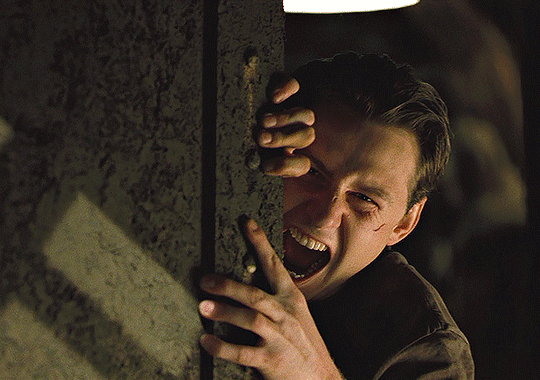
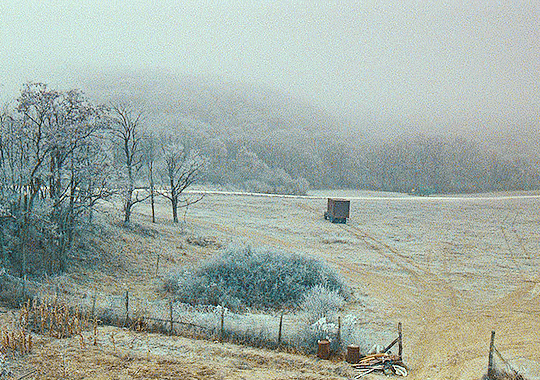
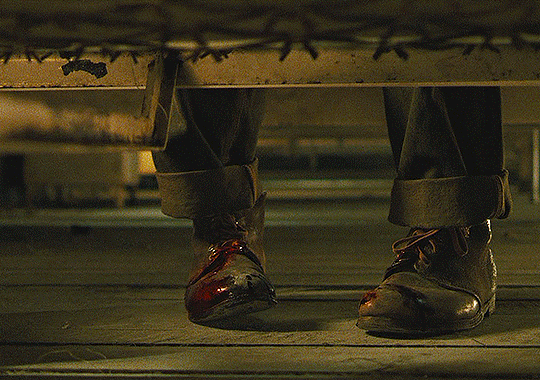

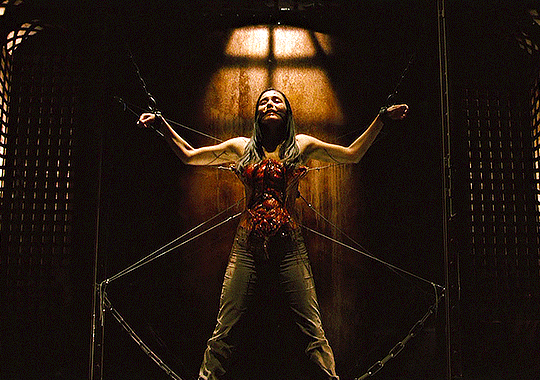
Amusement (2008) Directed by John Simpson
133 notes
·
View notes
Text
[Werewolf au: after seeing Ghost transform into a werewolf for the first time]
Price, drops his cigar in shock: JESUS CHRIST!
Soap, hides behind Price: *screams*
R/n, calm: People, please! We're all frightened and horny.
Soap & Price:...
Soap: Did she just say...What the hell kind of crazy shit are ye into woman?!
R/n, points at were-Ghost: I’m into that kind of crazy shit, anyway...
#s: the simpsons#call of duty modern warfare incorrect quotes#werewolf au#werewolf x reader#call of duty 2022#simon riley x reader#simon ghost riley x reader#werewolf! Ghost#john soap mactavish#john price#cod mw ghost#cod mw soap#cod mw price#afab reader
2K notes
·
View notes
Text


Comentario creativo
#los simpson#memes#trolls#trolls 3#trolls floyd#trolls branch#trolls bruce#trolls clay#trolls john dory#gay#brozone
172 notes
·
View notes
Photo

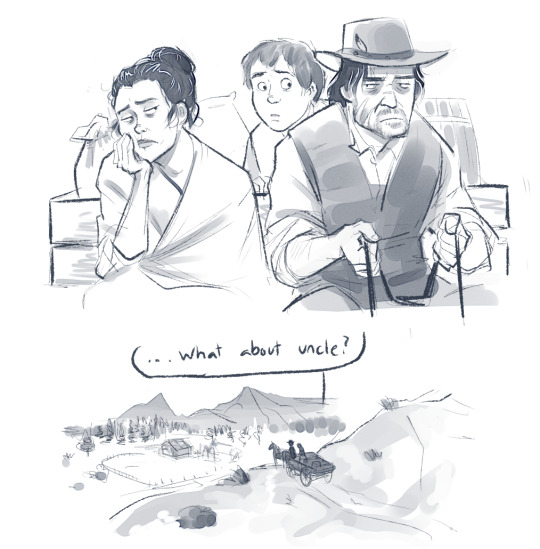
Eh, he’ll find his way back someday
#please don't blur this too much tumblr cmon#John Marston#Abigail Marston#Jack Marston#rdr2#rdr1#Red Dead Redemption 2#Red Dead Redemption#simpsons meme edit with extra steps
2K notes
·
View notes
Photo
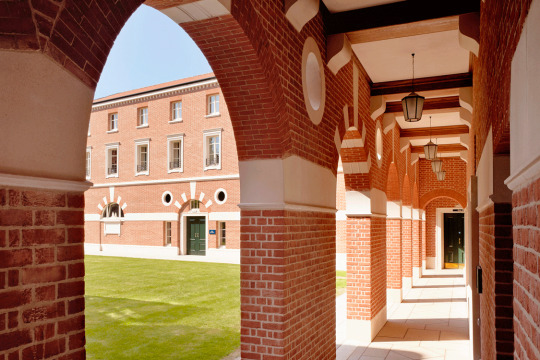
John Simpson Architects. The Arcade at Pipe Partridge Bldg., Lady Margaret Hall, 2010. Oxford.
1 note
·
View note
Text
(in a meeting with Cyclone)
Iceman(nudges Maverick): Tell him about your former CO's.
Maverick(to Cyclone): Some quit, some turned to drugs and alcohol.
#incorrect quotes#icemav#cyclone needs a raise#top gun maverick#original: john pinette#pete mitchell#tom kazansky#beau simpson#iceman kazansky#maverick mitchell#cyclone simpson
258 notes
·
View notes
Text
Rating Beatle Caricatures from The Simpsons (Non-Exhaustive)

7/10. Pretty much exactly what you'd imagine "Simpsons-style Beatles" to look like. Paul's sultry-yet-superior eyes are simple and effective. John and George are recognizable but unremarkable, though John's Roman nose has translated well. Ringo's puppy dog eyes are perfect and his nose is only mildly offensive.

11/10. Deeply offensive portrayal of the snooter but I don't care. I want a pocket sized figurine of this character to carry with me at all times because looking at this picture tells me that everything is going to be all right. The warm fuzziness of Ringo Starr has blended perfectly with the warm fuzziness of classic Simpsons and I could not be happier.

2/10. I'm not saying it isn't accurate, I'm just saying that I hate it.
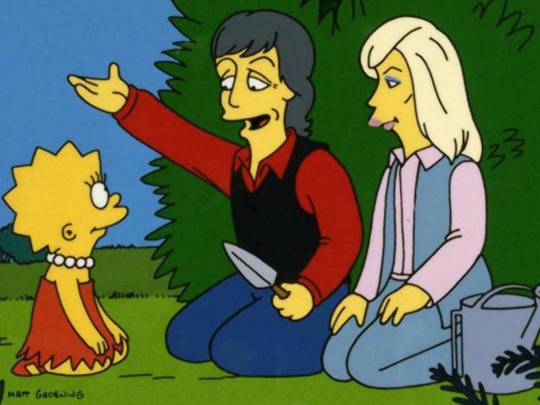
9/10. I'm biased because this episode sparked my interest in vegetarianism, but they really have captured the effeminate, dreamy, fuckable look of mid 90s Paul McCartney incredibly well, right down to the eyebrows. There's a touch of their later tendency to draw celebrities in a less stylistic way than original characters, but he's still very clearly Simpsons Paul. We don't have to talk about what they did to Linda.

3/10. The glasses are doing a LOT of work here. Somehow it feels like they tried to make him more conventionally attractive, like they put their reference photo through an Instagram filter before they drew it. It's symptomatic of modern Simpsons in that it's pleasant to look at but devoid of personality or joy. Also, on a personal note, this episode led to a lot of jokes online about how John would never go to heaven, which isn't so much offensive as offensively first-thought.

0/10. Soulless.


10000000/10. I know technically this one doesn't count, but this episode and specifically this still is undeniably their best and most compelling caricature of The Beatles. Apu radiating George-esque exhaustion and disillusionment, Barney/John looking to Homer/Paul with mistrust (but he's still looking to him), and Skinner with his eyes downcast, fully withdrawn into himself, a stone in a torrential river that is finally overflowing its banks. They've deviated from the original image but in doing so have made its impact more pointed and powerful. As we look at this still we become heartbreakingly aware that The Be Sharps are over in every way that matters, and yet we know too that they are not over. That the love Homer felt for his unborn child when he wrote Baby On Board is only growing stronger every day, that the things expressed in this episode will continue to matter to us even after the characters have returned to their normal roles. The Simpsons is episodic by nature and nothing, no matter how compelling, will still exist in a week. But ephemeral things like love and hope and earnestness are no less powerful, no less the purpose of our human lives, because they come to us in brief episodes. Just because they no longer exist it doesn't mean they are no longer real. I don't know why Yoko looks like that.
#the beatles#paul mccartney#john lennon#ringo starr#george harrison#beatles#get back#the simpsons#the be sharps
83 notes
·
View notes



